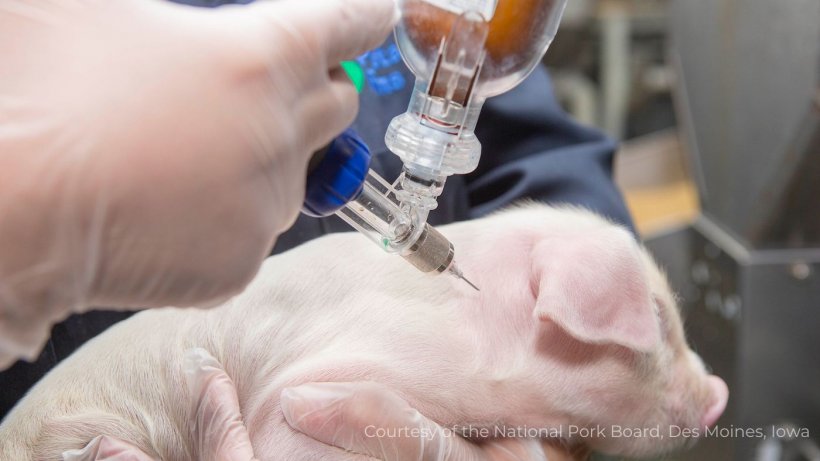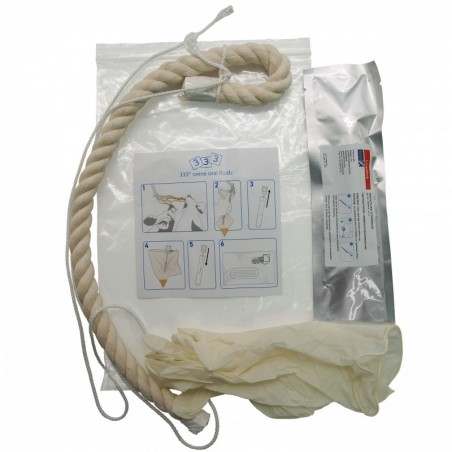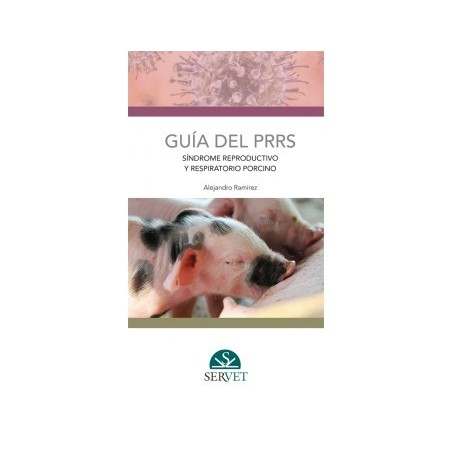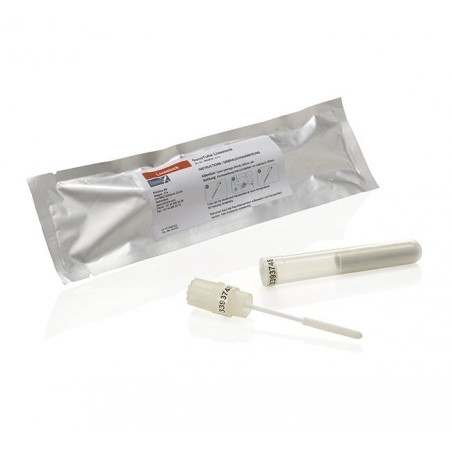Suidae species are characterized by a six-layered epitheliochorial placenta that, unless it is damaged during gestation, prevents leaking of large molecules like immunoglobulins from the sow to the foetuses. On the other hand, foetuses can produce their own antibodies against antigens in the last third of gestation and have functional immature immune cells and extracellular components able to respond to infections. Therefore, neonates are not fully immunologically competent, and it is considered that the complete adaptative protective immune response of the piglet needs around four weeks to be established. In consequence, the protection of the newborn piglet against infectious agents is dependent on the acquirement of maternally derived immunity (MDI) from colostrum and milk.
The amount of MDI transferred from sows to their offspring is determined by:

- the sow’s immunity level at the time of parturition
- the timing of post-natal colostrum intake
- the volume of colostrum ingested
In all cases, strengthening sow herd immunity against specific pathogens through exposure and/or vaccination is a useful management tool for ameliorating clinical effects in piglets and delaying infection until the piglet immune system is fully prepared to respond. However, the duration of MDI is rather variable among pathogens. Under field conditions, it is usually measured considering only one arm of the immune system, the humoral one: maternally derived antibodies (MDA). The duration of MDA refers to the age of the piglet at which their MDA levels fall below the limit of detection of the test. It is important to consider that the duration of MDA is dependent on the initial concentration of MDA and the threshold of the serologic test used.
If the level of MDI wane before piglets’ immune system has reacted against a given pathogen, there is a non-protected time-window where the piglet is highly susceptible to infection. Therefore, the desirable scenario is to vaccinate piglets prior to natural infection although it implies that vaccination is performed in presence of MDI for most pathogens.

Depending on the levels of such MDI, a potential interference of vaccine intake may happen, jeopardizing vaccine seroconversion and efficacy. Piglet MDI may come from natural infection, vaccination, or both. In the latter case, and especially if sows are vaccinated during late gestation, the amount of measurable MDA transferred can be very high, increasing the risk of interference. Nevertheless, vaccinating sows and piglets in the appropriate timing may yield the best results in terms of herd protection and productivity.
Vaccine efficacy interference may involve a number of possible mechanisms, including:
- the neutralization of the immunizing antigen
- the masking of B cell epitopes
- and/or the down-regulation of neonatal Ig synthesis by means of the inhibition of B cell maturation and development.
Importantly, vaccine efficacy interference is mainly considered with intramuscularly (and probably intradermally) applied vaccines that generate systemic and, eventually, mucosal immune responses. However, the degree of potential vaccine efficacy interference due to MDA with vaccines delivered through mucosal surfaces remains unknown.
In the presence of high levels of systemic antibody titres at the time of intramuscular vaccination, the most typical interference effect is a reduced or lack of seroconversion. However, the key issue would be if this interference in seroconversion translates into lower vaccine effectiveness. The most widely used method of measuring vaccination effectiveness in terms of productive parameters is the calculation of average daily weight gain (ADWG).
Nowadays, piglets are usually vaccinated against several pathogens at early ages. The most common infectious agents for which piglet vaccines have been developed are detailed in Table 1, including current data on potential interference with vaccine efficacy. Importantly, while interference with vaccine efficacy is often characterized in terms of comparing experimental vaccinated groups with different antibody titres, it may also be studied by comparing vaccinated groups of various ages.
Table 1. Interference of MDA with vaccine efficacy in terms of serological and production parameters for several respiratory and systemic swine pathogens.
| Pathogen | Vaccination age (in weeks) |
Interference on antibody seroconversion (assay used) (1) |
Interference on production parameters (parameters evaluated) (2) |
|---|---|---|---|
| Swine influenza virus | 3 | Yes (HI assay) | NE |
| Different age groups | Yes (HI assay) | NE | |
| 16 | Yes (HI assay, ELISA) | NE | |
| Porcine reproductive and respiratory syndrome virus | 3 | Yes (ELISA, VNT) | NE |
| 3 & 4 | Yes (ELISA) | NE | |
| Porcine circovirus 2 | 4 | Yes (ELISA) | No (ADWG) |
| 3 | NE | No (ADWG) | |
| 3 | Yes (IPMA, VNT) | NE | |
| 3 | Yes (ELISA) | NE | |
| 3 | Yes (IPMA) | NE | |
| 4 | Yes (IPMA) | No (ADWG) | |
| Different age groups | YES (ELISA) | Yes (ADWG) | |
| 4 | Yes (ELISA) | NE | |
| 3 | Yes (ELISA) | Only when S/P values at vaccination are extremely high (ADWG) | |
| 2 | NE | No (ADWG, mortality) | |
| M. hyopneumoniae | 1 & 4 | Yes (ELISA) | No (ADWG, mortality) |
| 2 | Yes (ELISA) | NE | |
| 1 & 4 | Yes (NC) | NE | |
| 1 | No (ELISA) | NE | |
| 1 | No (ELISA) | NE | |
| 1 | Yes (ELISA) | NE | |
| 1 | Yes (ELISA) | NE | |
| A. pleuropneumoniae | 6 | Yes (ELISA) | NE |
| 6 | Yes (ELISA) | NE |
(1) ”Yes” when the age and/or MDA of the animals of study are associated with reduced/delayed active antibody post-vaccinal response; “No” when the age and/or MDA of the animals of study are not attributed to a reduced/delayed active antibody post-vaccinal response; “NE” when serum antibodies were not evaluated. HI assay: Hemagglutination-inhibition assay; VNT: Virus neutralisation test; ELISA: Enzyme-linked immunosorbent assay; IPMA: Immunoperoxidase monolayer assay; NC: Not cited.
(2) NE: Not evaluated; ADWG: Average daily weight gain.
Several studies on pathogens included in Table 1 have shown that MDA may interfere with seroconversion, particularly when the titres of systemic antibodies were high at the time of piglet vaccination. Therefore, it might be interesting in some cases to wait for MDA declining and vaccinate piglets beyond 3 – 4 weeks of age, or even later. In contrast, when vaccine efficacy was also evaluated, the interference was shown in terms of seroconversion elicited by the immunization, but it was rarely translated in worse productive parameters. However, it must be considered that lack of demonstrated commercial vaccine effectiveness is unlikely to be published in the literature. Furthermore, it would be also interesting to investigate if the existence of antigen-specific cell mediated immunity of maternal origin in the neonatal piglet can influence the development of vaccine-induced immunity, particularly in those cases where the piglet is vaccinated very early.
All in all, based on the existing literature, early piglet vaccination could be considered as a very important option to protect the piglet in terms of reduction of clinical signs and improving performance parameters, notwithstanding the potential serological interference issue. In fact, no conclusive interference has been shown regarding performance parameters based on the existing published literature.
Extracted from the paper: Impact of maternally derived immunity on immune responses elicited by piglet early vaccination against the most common pathogens involved in porcine respiratory disease complex. Martínez-Boixaderas N, Garza-Moreno L, Sibila M, Segalés J.Porcine Health Manag. 2022 Mar 16;8(1):11.











